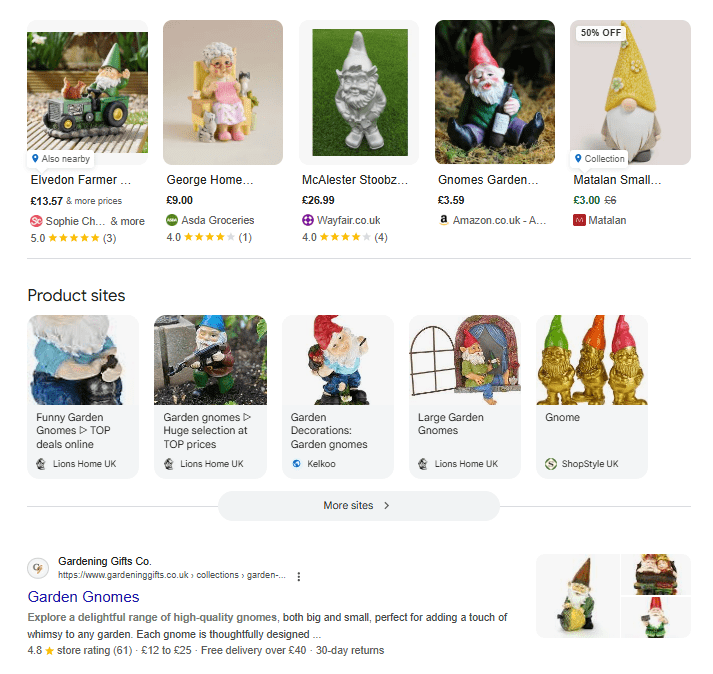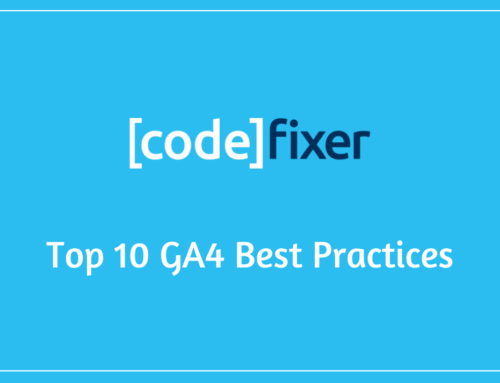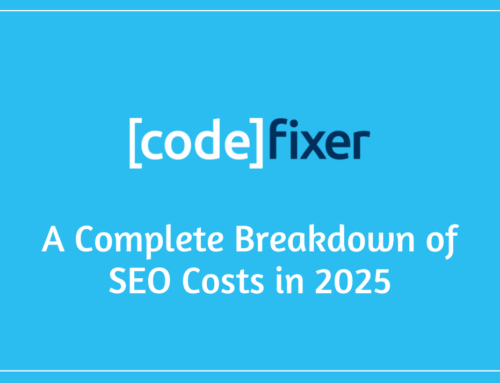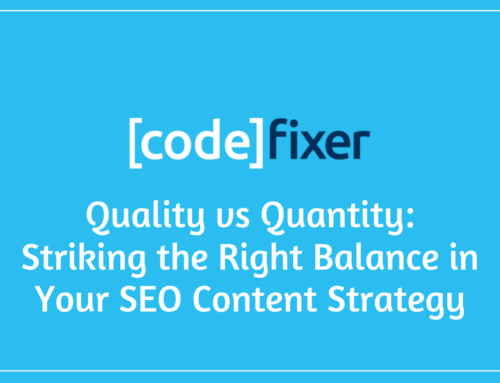With over 30.7 million eCommerce websites worldwide, the ability to stay visible online goes beyond having the best products. To gain that lucrative top spot, eCommerce businesses need their organic search (SEO) strategy to be more than an afterthought.
This blog breaks down nine practical eCommerce SEO tips to help online shops stay competitive in this cutthroat industry and sell more in the process.
What is eCommerce SEO?
eCommerce SEO makes online shops more visible organically in search results. It’s more than just finding the right keywords; it’s about improving your site’s structure, content, and performance. Strong eCommerce SEO strategies don’t just attract visitors – they support conversions and long-term business growth.
Top 9 eCommerce SEO Tips to Increase Sales
When carried out correctly, the following tips provide a practical jumping-off point for businesses that want to make SEO work harder for their online shop. While each one is useful on its own, we find the real value comes when they’re used together as part of a consistent SEO strategy.
1. Optimise Product Pages for Search Intent
Your product pages should match the search terms that people are actually searching. This doesn’t just mean targeting the right keywords; it also means creating content that speaks to their needs. Even the page layout can factor into how a visitor will interact with your site.
Include key features and benefits at the top of the product description to signal to potential buyers how this product will solve their problem. Using relevant search terms throughout the copy, page titles, and descriptions will signal to Google what this page is about, improving visibility and conversions. For example, if you sell hairdryers, include benefits such as ‘quiet’ or ‘no-frizz technology’ at the top to help customers understand what your product does and how it helps.
2. Focus on Long-Tail Keywords That Drive Sales
When matching keywords to search intent, don’t underestimate the power of long-tail keywords, particularly in your title tags. Although these keywords will likely have low search volumes, they tend to be more specific and commercially focused.
Title tags essentially tell the user and Google what the page they’re landing on is about. Aside from appearing in traditional listings, Google pulls these title tags to display in its organic and paid Shopping results. Using long-tail keywords, you can still be competitive without such stiff competition.
Luckily, we find the following title tag template is a great start:
- ‘Brand name’ ‘product name’ ‘USP’| ‘Your brand’
But, where many eCommerce businesses fall down is with getting those long-tail keywords right from the start. It’s time-consuming to research the right keywords for your products, which is why we recommend SEO training to help you cut through the keyword noise and get your products ranking higher.
3. Take Advantage of Organic Shopping Listings
In the last few years, Google has drastically changed how search results are displayed for eCommerce queries. The traditional ‘blue link’ listings are no longer the first thing you see when searching for a product. Take the example search for ‘garden gnomes: before the top organic listing is shown, customers must first scroll past Sponsored Ads, Organic Shopping and even a carousel of Product Sites to get to it.

‘Garden gnomes’ SERPs, showing organic shopping ads before organic listings
Optimising for Organic Shopping is an easy and ‘free’ way to get your products showing where it matters most. Unlike Paid Shopping Ads, which automatically display your products above all else, Organic Shopping listings are created by Google pulling the most relevant information from the product page itself.
This is why optimising these pages’ descriptions, images, title tags, and reviews is crucial. And you can even take it a step further and add the key features (or USPs) as Product Highlight Attributes under your Google Merchant Center account. Doing so can help Google narrow down the key features and benefits to display so customers know exactly how your product will help them.
4. Create Conversion-Focused Supplementary Content
Beyond product listings, supplementary content like FAQs, category descriptions, and blogs like buying guides can attract organic traffic and build trust. In fact, 57% of marketers say blogging has helped them gain customers who use Google to research products before purchase.
Often underused within eCommerce, supplementary content answers buyer questions and supports users through the consideration phase, which often nudges them closer to purchase. While it doesn’t lead to immediate sales, it’s part of a long-term strategy to nurture future sales.
5. Build a Search-Friendly Site Structure
The longer a visitor stays on your site, the higher Google will rank it, so having a clear, logical site structure will help users explore longer. Plus, a good site structure enables search engines to navigate your website easily.
Having well-labelled categories, simple navigation, and a shallow page hierarchy (pages found within a few page clicks of your homepage) makes products easy to find and index. If your website has large catalogues, and therefore more pages, this kind of structure helps Google discover more, increasing visibility and ultimately leading to more sales.
6. Use Internal Linking to Your Advantage
Internal linking helps search engines understand your site and spreads page authority more effectively. It also keeps users exploring your site by guiding them to related products or useful content. Remember, the longer a user stays on your website, the more likely Google rewards it with a higher ranking.
Take one of our eCommerce clients who sells wood stoves, for example. At the bottom of their product pages, they include two sections that help improve the customer journey by offering them alternative options to explore and helpful accessories to add to their basket.

Example uses of internal linking on product pages.
Internal linking can also help with underperforming pages. Linking from high-performing pages to these pages (as long as they’re relevant) can help boost page performance and improve time on site.
7. Don’t Skip Technical SEO Basics
Technical SEO is often underestimated, but it makes sure your site can be properly crawled, indexed, and ranked. Even with great content, issues like slow load times, broken links, or mobile usability problems can impact sales.
One common technical issue we’ve seen on Shopify sites is duplicate content from tagged collection pages, especially when static subcategory pages are missing.
We recently helped a figure skating store facing this exact problem; they had strong products, they weren’t ranking. By addressing duplicate tag pages and building proper subcategories, their visibility and traffic improved significantly, and their figure skating leggings became a top seller.
8. Implement Structured Data (Schema Markup)
Structured data adds context to your pages by marking up information like price, availability, and reviews. This allows your listings to appear with rich snippets in search results and can even help with visibility in your Google Shopping Ads campaign, increasing click-through rates.
While this requires some technical know-how, it is one of the most effective eCommerce SEO practices to implement.
9. Align SEO Strategy with Seasonal Trends and Sales Cycles
For many eCommerce websites, seasonality plays a big part in their online visibility and performance. But it is possible to make the most of these peaks and troughs with SEO.
For instance, if your peak sales happen around winter, like our home-heating ecomm client, plan your product page optimisations ahead of time. This gives search engines a chance to index and rank them before the colder months set in. Then, during the lower traffic months, you can focus on technical tweaks or add helpful blog content to continue building brand awareness and trust.
This is where tracking key metrics is especially important. It allows you to understand the fluctuations of your sales cycles and how (and when) to prepare for the next one.
Let an SEO Agency Do the Heavy Lifting for Your eCommerce Site

Even with the right tips in hand, implementing a full eCommerce SEO strategy can be time-consuming, especially when you’re already juggling stock, delivery, other marketing channels, and more. That’s where partnering with an SEO agency that understands eCommerce can make all the difference. Alongside understanding eCommerce SEO best practices, we know the importance of tracking performance. Doing so lets us adjust strategies to compensate for natural dips and to fix issues before they negatively impact your site.
If you’re ready to get more from your eCommerce SEO, without trying to do everything yourself, get in touch. We’ll help you take the weight off and make SEO work harder for your business.





